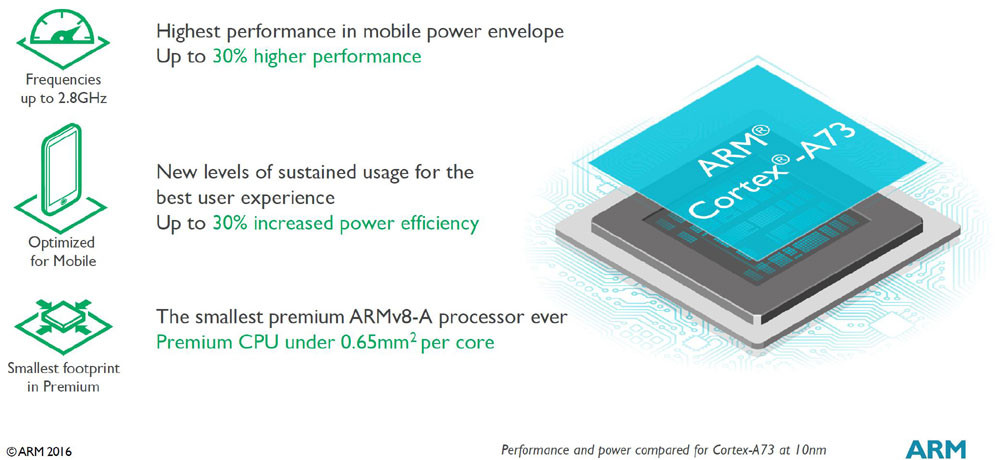Qualcomm today officially announced its first 64-bit high-end chipsets for mobile devices — the Snapdragon 808 and 810. Both the processors are 64-bit enabled with ARMv8 ISA and are based on ARM’s big.LITTLE design and come with an integrated Cat 6 LTE modem.
As the naming scheme might have suggested, the Qualcomm Snapdragon 810 is the faster of the two and is a quad-core chip (technically eight) packing in ARM’s 64-bit Cortex-A57 and Cortex-A53 CPUs to deliver the perfect balance between performance battery life. It will be accompanied by an Adreno 430 GPU that is designed with 4K displays in mind and supports OpenGL ES 3.1 with hardware tessellation, geometry shaders and programmable blending.
The Adreno 430 GPU can deliver up to 30% more performance than its predecessor while sipping up to 20% less power. Other notable features of the chipset include support for LPDDR4 memory and dual 14-bit Image Signal Processors with throughout put support for up to 1.2Gbps and 55MP image sensors. The chipset will also be able to record videos in native 4K Ultra HD resolution and will offer advance features like gyro-stabilisation and 3D noise reduction.
The slightly slower Snapdragon 808 will come with two Cortex-A57 cores and four Cortex-A53 cores and is designed for WQXGA (2560×1600) displays. It will be accompanied by an Adreno 418 GPU which will also include support for OpenGL ES 3.1 and will provide up to 20% better performance than its predecessor — the Adreno 330. Other notable features include support for 12-bit dual Image Signal Processors and LPDDR3 memory.
Common features of both chipsets include support for LTE-Advanced networks for combined download speeds of up to 300Mbps using Qualcomm’s RF360 modem, 2-stream 802.11ac with multi-user MIMO, Bluetooth 4.1, USB 3.0, NFC and Qualcomm’s latest IZat location core for accurate and faster location services. The chipsets will be based on the 20nm fabrication process so expect them to be as power efficient as the Snapdragon 800, if not more. The use of Qualcomm’s RF360 modem will also allow carriers and OEMs to deliver a single SKU of a handset that will work across a range of LTE networks.
The chipsets are expected to go in sampling in the second half of this year and will start showing up in commercial devices by the first half of 2015.


















